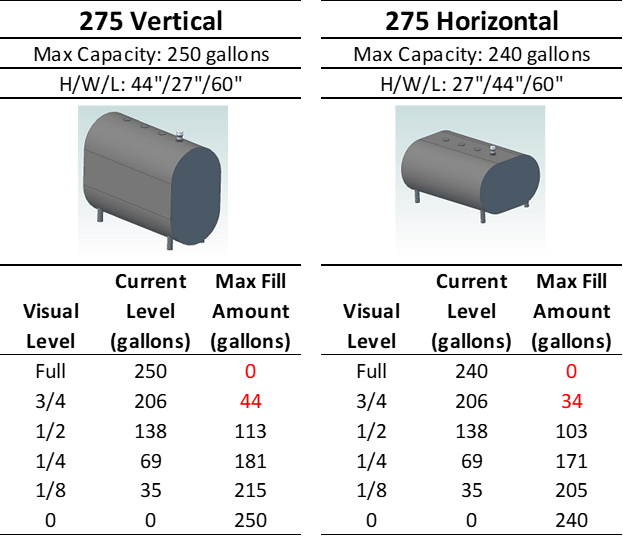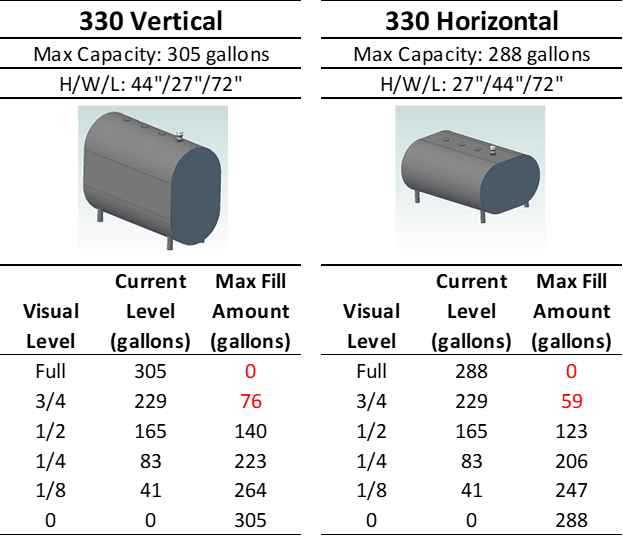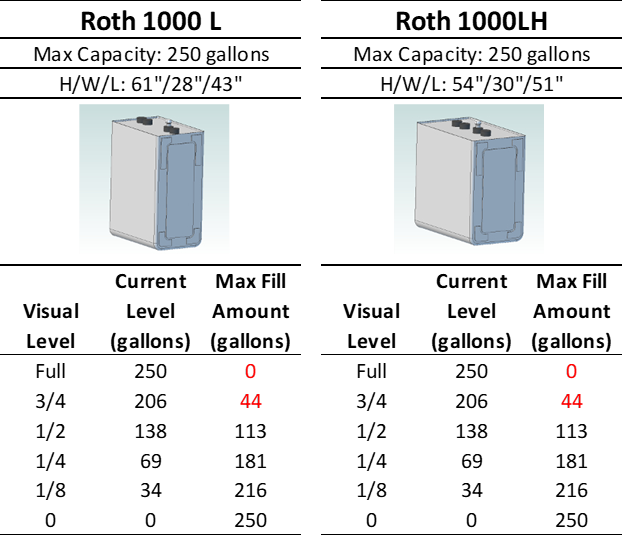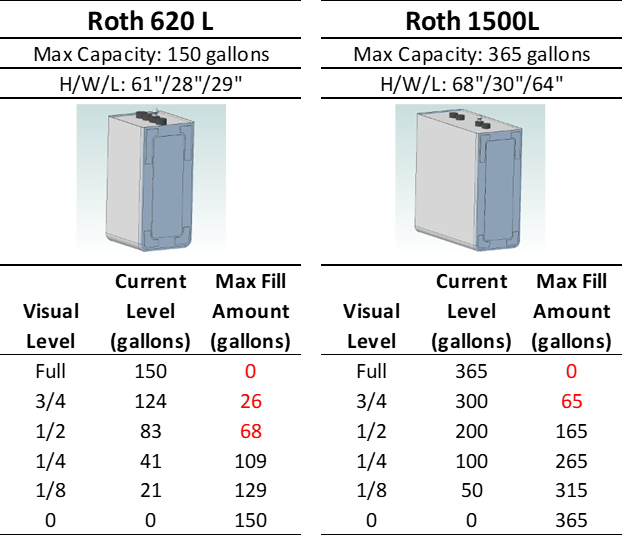When’s time to order heating oil, it’s very important to know how many gallons can fit in your tank. This will allow you to maximize the size of your delivery and take advantage of any discounted pricing that the dealer is currently offering. Some dealers will charge more for less oil you order, so it’s important to know how much is in your tank so that doesn’t happen! If you want to get more information on how to order oil online using FuelSnap, check this article here!
But before you go ahead and order oil, you’ll need to make sure that your tank has enough room for at least 100 gallons of heating oil. For most dealers, they will only deliver a minimum of 100 gallons. Some dealers will deliver less than 100 gallons, but at a MUCH higher price than what it would be at 100 gallons. Additionally, if you order 100 gallons and your tank cannot take the full amount, then you might get an upcharge for not taking the full 100 gallons! This is why it’s so important to know how much oil is in your tank at all times! Not only to prevent running out but to make sure that your tank can fit the amount of oil that you’re ordering. To calculate this, you’ll need to ask yourself the following questions:
- What is your Heating Oil Tank’s Style?
- What’s the maximum capacity of your tank?
- What is the current level of oil in your tank?
You can actually calculate how much oil by subtracting the maximum tank capacity from your current level. It should look something like this:
Current Tank Level – Maximum Tank Capacity = Maximum Delivery Amount
What’s Your Tank Style?
Nowadays, there are a lot of different tank styles to worry about. There are standard steel heating oil tanks by Granby and double-wall steel tanks by Roth. So it can get pretty confusing on what style of tank you might have. But don’t worry, it’s pretty easy to differentiate between the two. So you shouldn’t have to worry about getting them confused.
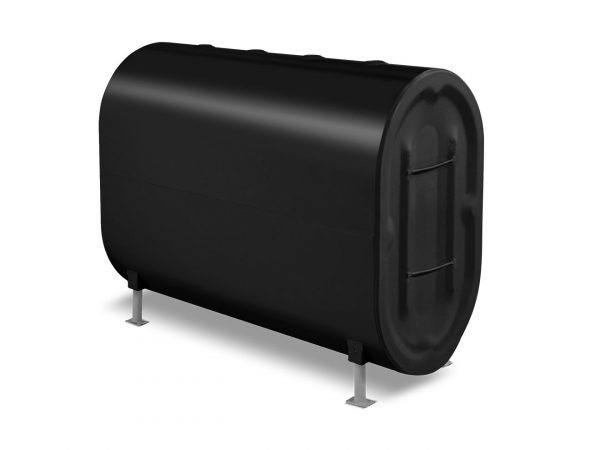
Granby Steel Tanks
Granby steel heating oil tanks are the most common heating oil tank, especially in the United States. They are most often found in sizes of 275 and 330 gallons. They can either have an orientation like the one shown in the above photo or lay flat on its side.
A good way to find out if your tank is a 275 or 330 is by the length of the tank. 275-gallon tanks will tend to be 5′ long while a 330-gallon tank will usually measure 6′ in length. Otherwise, both these tanks are identical. You can view all of the different styles for this tank on Granby’s website here.
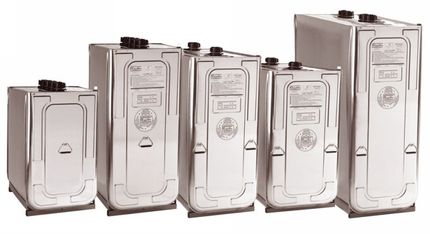
Roth Double-Walled Tanks
If you have a new home, live near the ocean, or have recently had your tank replaced in the past couple of years, then you might’ve had this style tank installed into your home. These tanks are called double-walled tanks for a reason. These tanks have an interior plastic tank and a steel-walled exterior tank. The interior plastic tank stores the heating oil and the steel exterior will catch any oil if the interior tank were to fail.
The most common size of tank you’ll see for this is the 1000L which is a 275-gallon tank with a capacity of 250 gallons. There are smaller and bigger sizes available that will hold more or less oil. But if you’re a Smart Oil Gauge user, it’s important to know that the gauge is not compatible with the Roth 1500L. This is because this tank has an internal support baffle that the sensor won’t be able to read past. This will cause the gauge to not read less than half a tank.
Oil Tank Capacity
While your tank might have a maximum capacity of maybe 275 or 330 for example, the tank will never be filled up to the max. This is because not filling it to maximum capacity will prevent the tank from leaking and overflowing. When filling the tank, oil dealers will keep filling the tank until they hear the vent alarm stop.
The vent alarm is normally around 6″ tall and will hang down in the tank positioned under the vent pipe. As oil is slowly filled into the tank, air is then pushed out of the tank through the vented pipe. This will cause the vent alarm to start making a whistling sound. The driver will be able to hear this whistle as he’s pumping oil into the tank. Once the oil reaches the vent alarm, the whistling sound will stop. When this happens, the driver will know when to stop pumping. Depending on your tank size, there will be roughly 5″-6″ of air left in the tank. This is how dealers will rely on filling your heating oil tank. This will also give the dealer a few seconds to turn off the valve to allow them to stop pumping oil into the tank.
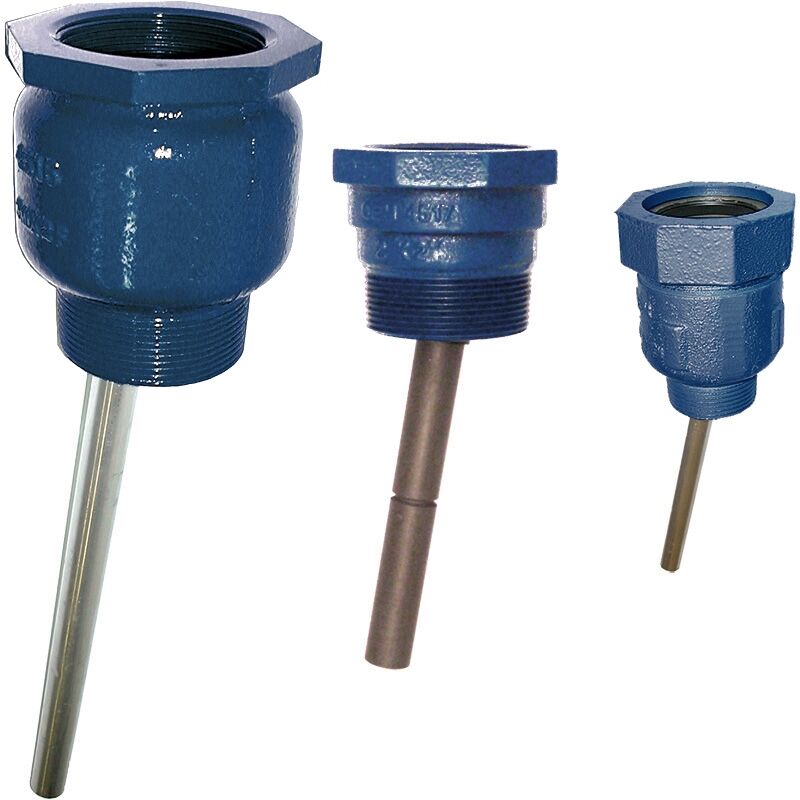
Now you might be wondering, “What’s my true capacity if it’s not the maximum tank capacity?”. Well, that tends to depend on your tank size. For example, a 275-gallon tank will have a true capacity of around 250 gallons. Meanwhile, a 330-gallon tank will have a true capacity of 300 gallons. You can calculate this by using our heating oil tank calculator! Our tank calculator will automatically determine what your true capacity is once you’ve put in the tank’s dimensions. You will then know what your tank’s true capacity is!
Current Tank Level
Now that you’re aware of what your tank’s maximum capacity is, you’ll need to determine the current level. The easiest way to figure out your current tank level is to purchase a Smart Oil Gauge. It will not only tell you your current tank level, but it will also send you alerts when it’s time to order heating oil! You can also order oil from the app whenever you need it!
But, if you don’t have a Smart Oil Gauge, we can use the float gauge for reference. The float will give you an estimated reading of around 1/4, 1/2, 3/4, and full. But, if you don’t have a gauge or your tank is underground, you’ll have to refer to a tank chart. This will require you to stick measure the tank and use a heating oil tank chart. Make sure that you are looking at the correct tank size or have the chart that your tank provider provided you with.
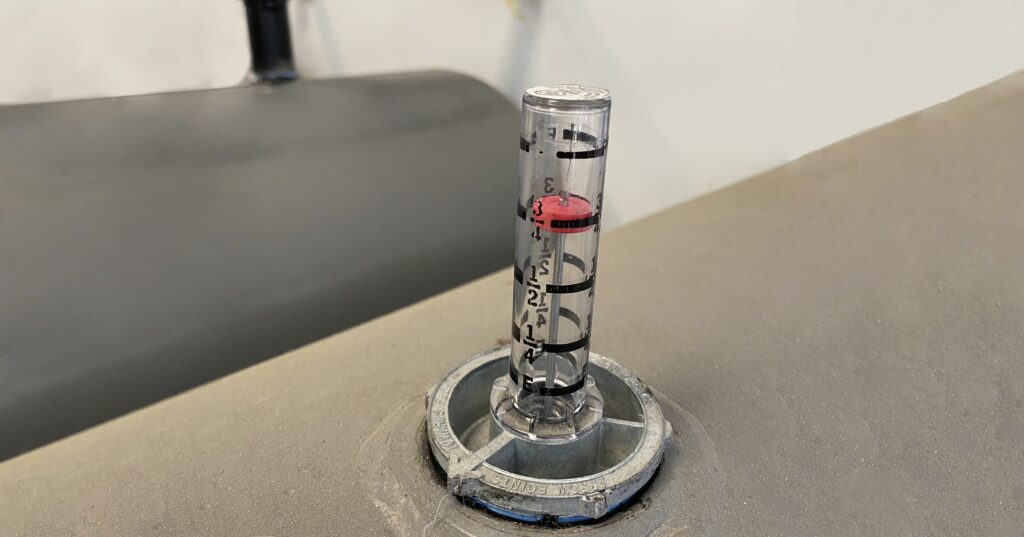
Over time your float gauge will become less accurate and can break. As the years go on, oil and sludge can coat and cover the bobber which can cause issues with accurate readings. If this is the case, or your float gauge breaks, upgrading to a Smart Oil Gauge can be a saving grace.
With the implementation of our Smart Oil Gauge Duo, you’re now able to get a precise reading from 0″-72″ inches! That’s a 6′ operating range that covers the top to bottom for most heating oil tanks! The gauge also has no moving parts! So you don’t have to worry about the device getting caught on the side of the tank or covered in sludge! You’re also able to order oil from local dealers in your area at the touch of a button! You can read up on all the benefits of the Smart Oil Gauge by taking a look at this article here!
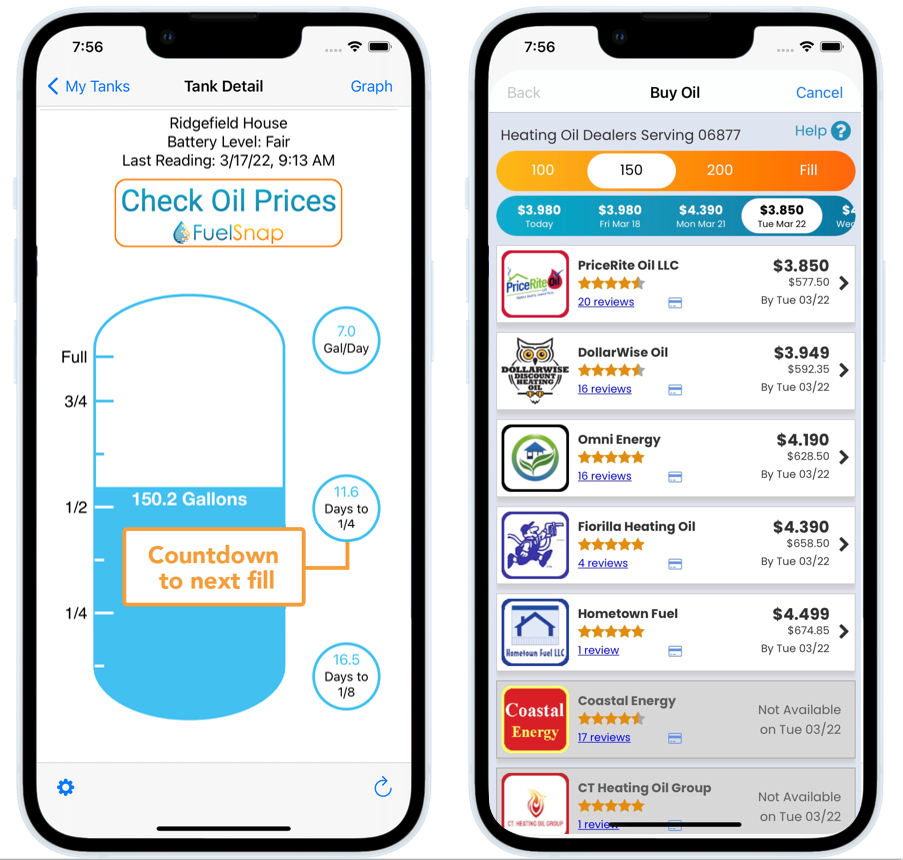
Conclusion
Keeping all of this information in mind, you should now be able to fully understand how much oil is in your tank! Whether you use a Smart Oil Gauge or the old float gauge is completely up to you! Just be sure to keep an eye on your oil level and track your deliveries, usage, and level and you’ll be able to ensure that you don’t run out again!
Happy Heating,
Hunter
